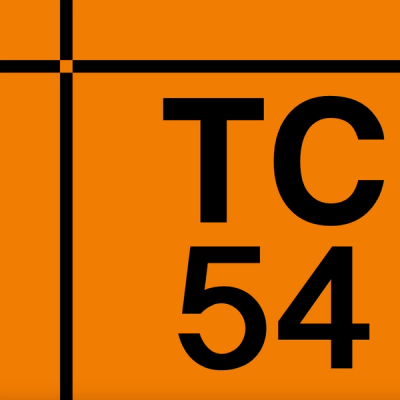Html Module
This module exposes a tag to include html. The HTML is converted to Native Open XML by the module. This allows you to add a formatted field entered by the user, or add more complex data by writing simple HTML (Open XML is much more complex to work with then HTML).
The HTML module currently supports:
<br> tags<p> tags<h1-6> tags, <h1> translates to Title, <h2> translates to Header1, <h3> translates to Header2, because there is no concept of title in the body of HTML<p> tags<b> tags<i> tags<u> tags<ul> tags<ol> tags<li> tags<span> tags<small> tags<s> tags<strong> tags<em> tags<code> tags<table>, <tr>, <td>, <tbody>, <thead>, <tfoot>, <th> tags<a href="URL">Linktext</a> tagsstyle="color: #bbbbbb" propertystyle="font-size: 30px" property<input type="checkbox"> and <input type="checkbox" checked>style="background-color: blue" property (for black, blue, cyan, darkBlue, darkGray, darkRed, green, lightGray, magenta, red, white, yellow). This limitation is of microsoft word itself.style="padding-left: 30px"<sub> and <sup><img> only if including the imageModule too, by using base64 src
Important : This module only supports docx, not pptx, for multiple reasons
Installation:
You will need docxtemplater v3: npm install docxtemplater
Install this module with npm install --save "$url"
Usage
Your docx should contain the text: {~html}. You can find a working sample at ./sample.js
{~html} is used for inline HTML{~~html} is used for block HTML
To be clear :
- The
{~inline} tag is used when you want to replace part of a paragraph. For example you can write :
My product is {~blueText} and costs ...
The tag is inline, there is some other text in the paragraph. In this case, you can only use inline HTML elements (<span> , <b> , <i>, <u>)
- The
{~~block} tag is used when you want to replace a whole paragraph, and you want to insert multiple elements
{~~block}
The tag is block, there is no other text in the paragraph. In this case, you can only use block HTML elements (<p>, <ul>, <table>, <ol>, <h1>)
Also, in tr elements, we can have lists, ..., so you have to surround your tags with <p>.
This code will throw an error (Tag 'em' is of type inline, it is not supported as the root of a block-scoped tag) :
<td style="width:33.333333333333336%;">
foobar<em>italics</em>
</td>
And this code will work :
<td style="width:33.333333333333336%;">
<p>foobar<em>italics</em></p>
</td>
Options
It is possible to set options to the htmlModule.
Option descriptions :
- ignoreUnknownTags [default=false]: If this option is set to true, and the module finds a tag that it doesn't handle yet, it will not fail but instead make as if the tag was of type
<span> - styleTransformer makes it possible to rewrite the styles that are used by the HTML module, for example :
- sizeConverters makes it possible to change the ratio between px and dxa for different tags.
For example, this will remap the styles so that h1 maps to Heading1 (instead of the default Title)
function styleTransformer (tags, docStyles) {
tags.h1 = docStyles.Heading1;
tags.h2 = docStyles.Heading2;
tags.h3 = docStyles.Heading3;
tags.h4 = docStyles.Heading4;
tags.h5 = docStyles.Heading5;
return tags;
};
const module = new HTMLModule({
styleTransformer: styleTransformer,
});
For example to ignore all unknown tags:
const module = new HTMLModule({
ignoreUnknownTags: true,
});
To change the size of "padding-left":
const module = new HTMLModule({
sizeConverters: {
paddingLeft: 20,
},
});
This will make paddingLeft a little bit larger on word than the default (which is 15).
Reasons for not supporting pptx
This module handles only docx documents, not pptx.
The reason for that is that HTML maps well to docx because they use the same linear flow, eg elements are placed one after the other in the document. However PPTX documents have multiple slides, which are stored in different files, and each element is positioned absolutely in the slide. For example, in PPTX if you have a table element and a paragraph in the same slide, they need to be placed in two "different" blocks.
Lets take a simple example :
 Paragraph and table in PPTX
Paragraph and table in PPTX
 Paragraph and table in DOCX
Paragraph and table in DOCX
Here is how these documents map to XML :
For pptx
<p:spPr>
<a:xfrm>
<a:off x="2376000" y="936000"/>
<a:ext cx="3384000" cy="346320"/>
</a:xfrm>
<a:t>My paragraph</a:t>
</p:spPr>
<p:graphicFrame>
<p:xfrm>
<a:off x="3579480" y="2726640"/>
<a:ext cx="5075280" cy="1439280"/>
</p:xfrm>
<a:tbl>
...
</a:tbl>
</p:graphicFrame>
For docx
<w:p>
<w:r>
<w:t>My paragraph</w:t>
</w:r>
</w:p>
<w:tbl>
...
</w:tbl>
As you can see, in docx, the elements come one after the other, without any "placement" information, in pptx however, these are placed absolutely with the <a:xfrm> and <p:xfrm> tags.
In standard HTML, you would write this example with :
<p>My paragraph</p>
<table>
...
</table>
which maps very well to docx, but not to pptx.
Support for images with <img>
To be able to replace the <img> tag, you have to also have access to the Image Module.
Then, you can do :
const HTMLModule = require("docxtemplater-html-module");
const ImageModule = require("docxtemplater-image-module");
const htmlModule = new HTMLModule({
img: {
Module: ImageModule,
// By default getSize returns the width and height attributes if both are present, or 200x200px as a default value.
getSize: function(data) {
// The html element, for example, if the data is :
// '<img height="20" src="...">'
// you will have data.element.attribs.width = '20'
console.log(data.element);
// The arraybuffer of your image
// (you could use https://github.com/image-size/image-size to calculate the size)
console.log(data.src);
// You return an array in pixel (here we have width 50px and height 100px)
return [50, 100];
}
}
}):
The <img> tag only supports base64 src, so for example, you can do :
<p>Hello</p>
<img src="data:image/gif;base64,R0lGODlhDAAMAIQZAAAAAAEBAQICAgMDAwQEBCIiIiMjIyQkJCUlJSYmJigoKC0tLaSkpKampqenp6ioqKurq66urrCwsPb29vr6+vv7+/z8/P39/f7+/v///////////////////////////yH+EUNyZWF0ZWQgd2l0aCBHSU1QACwAAAAADAAMAAAFSiCWjRmViVVmZRWWjiurXrBI2uMkFcdjrRfaJQIQCAKQTDBmKAYACAwuswAABoBEDMUgYAkOpWiFeRgUDZIKNnqpLaJLXM2KjaYhADs=" alt="">
Note that HTTP URLs in src will not work, since docxtemplater doesn't know how to load those files.
You can use the following getSize function if you would like to use the same width and height as the image source.
import sizeOf from "image-size";
function getSize (img) {
const buffer = new Buffer(img.src);
return sizeOf(buffer);
}
Building
You can build the es6 into js by running npm run compile
Testing
You can test the module with npm test

 Paragraph and table in PPTX
Paragraph and table in PPTX Paragraph and table in DOCX
Paragraph and table in DOCX

